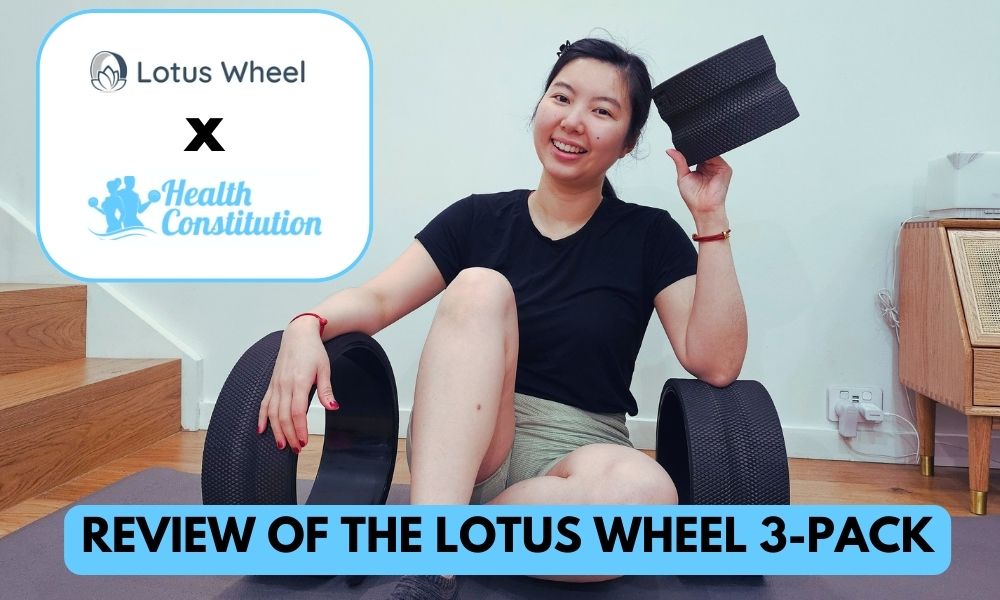
Any seasoned yogi would have tried mats, straps, blocks, and other familiar yoga props. But have you ever heard of yoga wheels?
Lotus Wheel recently approached me and asked if I was interested in testing their Lotus Wheel 3-Pack. I was intrigued, so I said yes and agreed to give my honest review.
While waiting for my yoga wheels to arrive, I researched a bit to see what yoga wheels are and how to use them. I learned that these round and hollow tools can help improve strength and flexibility through deep, gentle stretches. They also offer support for practising more challenging yoga poses.
Some people believe that they can also promote back pain relief, which I found particularly interesting.
I even watched a few videos from Lotus Wheel’s Facebook ads where a lady cracked her stiff back by rolling on the wheel. I thought this tool looked fun and not just for yogis.
Since I’ve always been into recovery tools, I was excited to try the yoga wheel. If you’re as keen as I am, keep reading my Lotus Yoga Wheel review to learn about my first-hand experience.
NOTE: I do not get paid to publish this review. See our Affiliate Disclosure page for more information on how we sustain the website.
About the Lotus Wheel
Lotus Wheel is a wellness company located in Auckland, New Zealand. Their objective is to offer innovative tools that help alleviate discomfort and pain, especially at the back and neck.
One of their products is the Lotus Wheel 3-Pack, priced at AU$149.00 (price accurate at the time of writing). This bundle includes yoga wheels in different sizes:
- 33cm for light pressure
- 27cm for firm pressure
- 17cm for deep pressure
These yoga wheels promote back pain relief, flexibility, and core strength. The two smaller wheels also provide the added benefit of relieving muscle soreness.
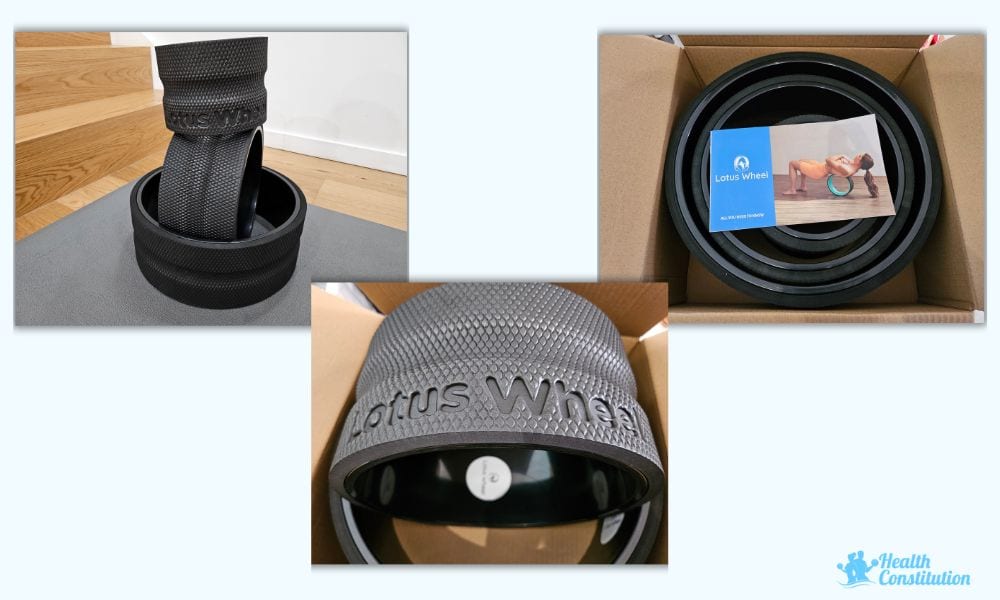
What is My First Impression of the Lotus Wheel?
While their headquarters is in New Zealand, they have 2 fulfilment centres, one in Auckland, and another in Sydney. So, you can be rest assured that you will get your order within reasonable timeframes. One thing to note is a standard shipping fee of $4.95 that applies to all Australian and New Zealand addresses.
My order arrived within 4 business days, which I think is quick. I received it in good condition and well-packed. Inside the box were three yoga wheels (33cm, 27cm, and 17cm) and an information booklet.
First impression: I got the full black ones, so I thought they looked like tyres. The foam parts have diamond-shaped imprints, which remind me of tyre patterns.
They are soft to the touch, like exercise mats. I believe they have the same material. According to the Lotus Wheel website, the wheels have an injection-molded ABS plastic core wrapped in EVA foam.
The 33cm wheel was large, and I was concerned I might hurt my back when I used it. All three wheels feel sturdy, though, and I’m confident they are of good quality and won’t break if used correctly and within the weight limit (200 kg).
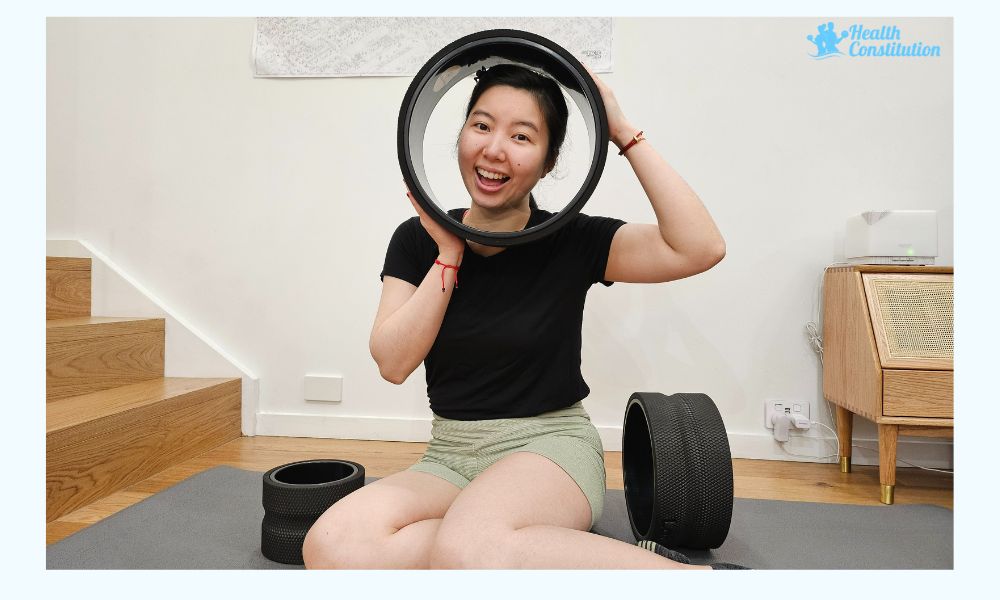
Is the Lotus Wheel User-Friendly?
Using the Lotus Wheel becomes easier with practice. It takes a bit of a learning curve, especially for those who have never tried this type of foam roller.
I was reverse planking the first time I tried using the 33cm wheel.
The instruction booklet suggested staying relaxed and avoiding stiffness, but I can’t seem to do that initially. I noticed that my abs became stiff instantly as I tried to put my weight on the wheel.
I liked how the groove on the yoga wheel felt on my back, though. It supported my spine as I rolled, and I’m glad it allowed me to target tight muscles without hitting any bones.
The 27cm one looked less scary, so I decided to try that next. After a few tries, I felt more comfortable putting my weight on the wheel, and I could relax and roll more smoothly.
I was slipping away when I tried to roll on my back. So, I suggest you wear a tight top or a sports bra for better grip.
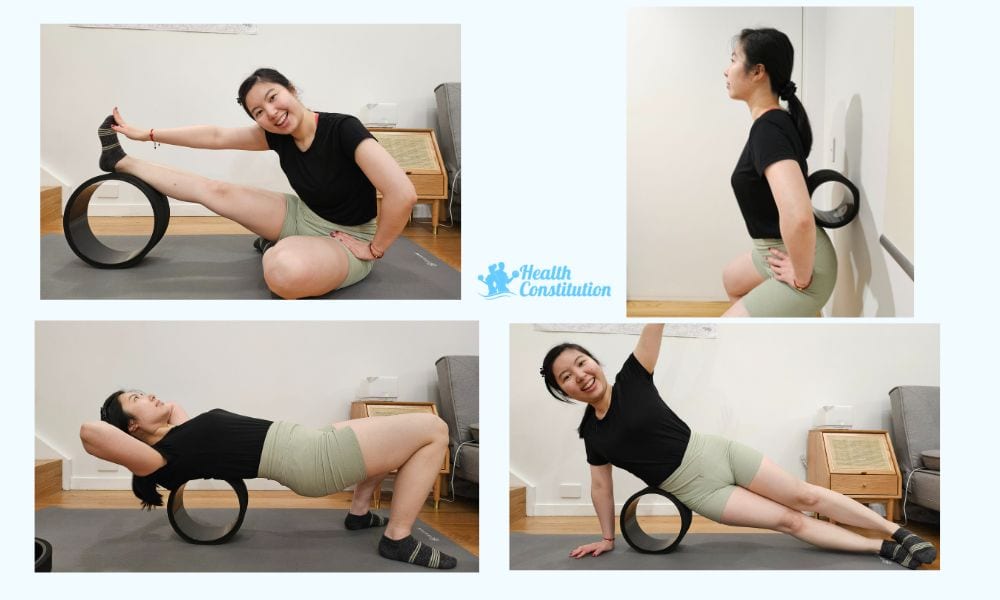
How Versatile Is the Lotus Wheel?
Several photos on the Lotus Wheel website show how to perform the back roll. However, the yoga wheels have other applications beyond back rolling, as detailed in their booklet.
Here are a few ways I’ve used them to stretch different body parts:
- Calves. The 17cm wheel effectively massaged my knots after a strenuous workout.
- Shoulders, chest, and back. Leaning back on the 27cm or 33cm wheel with my hands behind my head provided a satisfying body stretch.
- Hips. I rolled the 27cm wheel under my hips, which felt great against my tight thigh and upper-leg muscles.
- Lower back. I also tried placing the 17cm wheel behind my lower back while sitting in a chair for posture correction. This position was quite uncomfortable for me, though. However, it did make me more aware of my posture, pushing me to sit straight and avoid slouching.
The yoga wheel is also excellent for warming up and cooling down. My back felt great by stretching before exercise. The smaller foam roller also helped relax my tight hips before my squatting exercise.
I particularly like rolling under my thighs and calves after exercise. The wheels loosened up my tight muscles for sure.
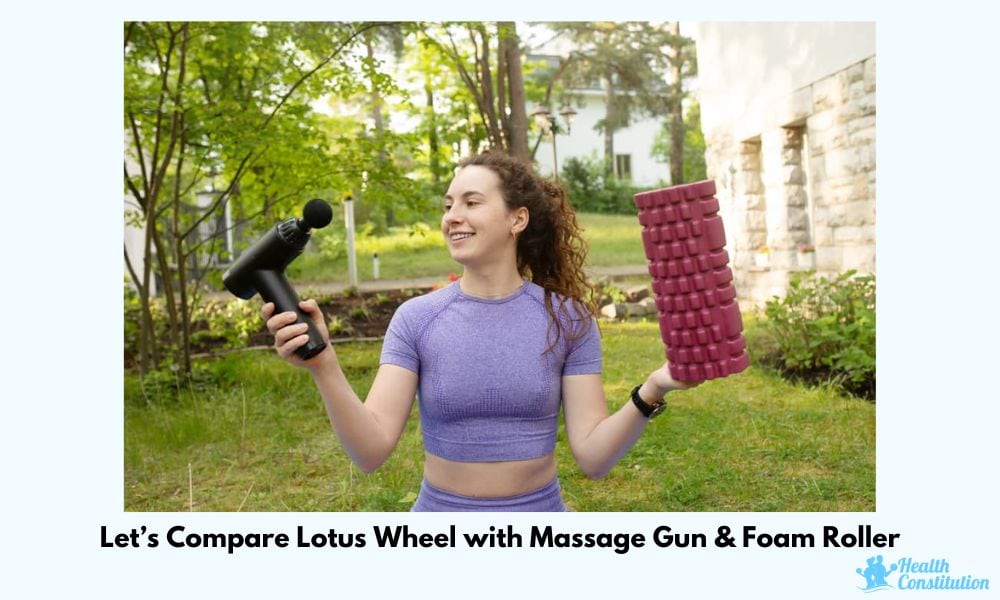
How is the Lotus Wheel Different from a Foam Roller and Massage Gun?
You might be asking this if you’ve tried other recovery tools like me. So, after trying out the Lotus Wheel, here’s what I honestly think.
Yoga Wheel vs Traditional Foam Roller
A foam roller is a single tubular shape, whereas the Lotus Wheel is circular. This difference means the yoga wheel provides more height and intensity to a specific area.
Let’s take the back as an example. Foam rollers can massage the entire back due to the width. On the other hand, yoga wheels can address the back by providing a deep stretch. It’s not necessarily intense pressure but rather a good stretch that opens up the chest.
Foam rollers also come with different surface designs – some are smoother, while others have ridges and knobs for added pressure. However, the Lotus Wheel only has one type of surface, but it has a groove at the centre for spinal support.
Both recovery devices are lightweight and portable. For full-body use, a user may need different sizes of yoga wheels, whereas a single foam roller may be good enough. Other foam rollers even have a vibration mode for extra massage power.
Verdict: Both are excellent tools for better flexibility and reduced muscle soreness. I find the foam roller less intimidating, more space-efficient, and beginner-friendly. However, a yoga wheel routine is a better option if you’re aiming to improve your yoga skills or spinal health through stretching.
Yoga Wheel vs Massage Gun
A massage gun can target almost any part of the body. The downside? It needs to be charged and can be tricky when massaging the back.
On the other hand, a yoga wheel can manually massage your back without any help from another person. However, for areas such as the thighs, hips, and calves, I still prefer to use a massage gun.
If you like intense massages, you only need to adjust the speed setting of a massage gun. Also, you can switch to a different massage gun attachment to achieve your desired effect. With yoga wheels, you’ll need various wheel sizes to target specific body areas, which can take up space.
Verdict: A yoga wheel is ideal for massaging multiple muscle areas in one roll. People who prefer deep but gentler massages will appreciate yoga wheels. On the other hand, I think a massage gun is more portable and versatile. It can produce more intense or concentrated vibrations to a body area that some users may prefer.
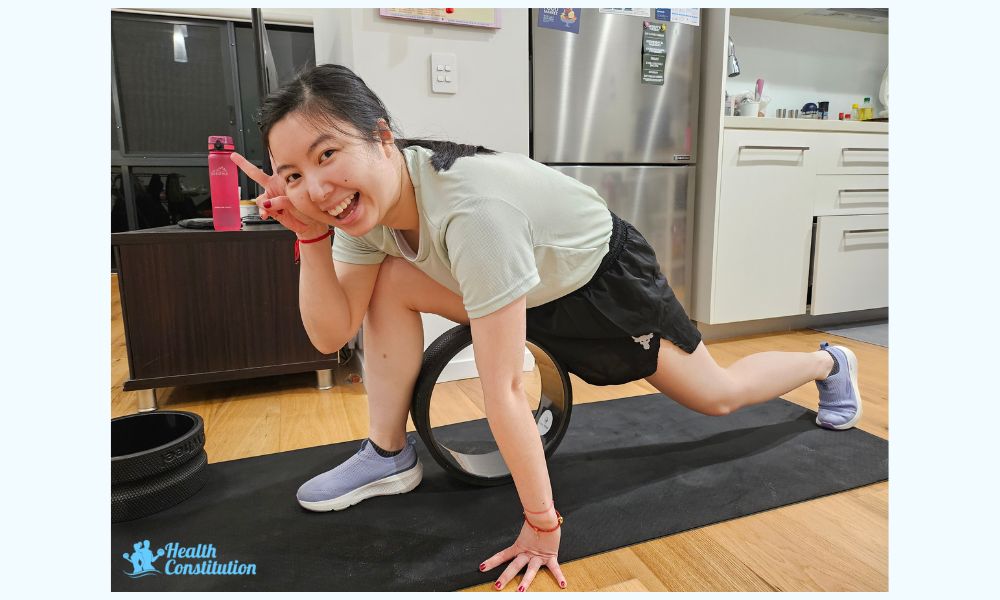
Is the Lotus Wheel Worth the Value?
Paying AU$149 for a 3-pack Lotus Wheel is worth it. My favourite sizes are the 33cm and 27cm wheels, but the 17cm wheel is a bonus. I like to use it when I do not want a high-intensity massage from a massage gun.
I find it quite relaxing to roll away the knots. Sometimes, I close my eyes while stretching or rolling on the yoga wheel. It’s a great tool when you want to let loose. I also appreciate that it is quiet.
Unlike a massage gun, yoga wheels are manual devices, so they are perfect for noise-free, Zen-like therapy. It also means you can bring and use one to the gym or have a quiet morning warm-up without waking the household.
In addition, Lotus Wheel is very kind to offer a $10 discount on the Lotus Wheel 3-Pack for Health Constitution readers. Be sure to enter the special code at checkout!
Final Thoughts: Who is the Lotus Wheel For?
I think the Lotus Wheel is for everyone. This 3-pack bundle is an excellent deal for people who want the best of both worlds: improve their flexibility and tackle tight muscles.
However, it is also crucial to be cautious when using a yoga wheel to avoid injury, as it’s round and can easily roll away. So, take it slow at first and practice.
The Lotus Wheel is a good option for people with stiff muscles who want more variety than a foam roller but not as deep a massage as a massage gun. New and experienced yogis will also find it a valuable addition to their yoga accessories.
In my experience, the Lotus Wheel is the best recovery tool for focusing on the back, making it ideal for those who do upper-body workouts often or sit for long periods. It’s a great tool to incorporate healthy habits into your daily routine.
While I still prefer a massage gun for other areas due to time efficiency, a yoga wheel is worth considering for targeting sensitive spots like the neck.
Check out the Lotus Wheel 3-Pack or visit the Lotus Wheel website to see which yoga wheel size best fits your massage and stretching needs.
- Who Should (and Shouldn’t) Take Probiotics? - 16 November 2024
- How to Choose the Right Probiotic - 16 November 2024
- Prebiotics vs Probiotics: The Dynamic Duo of Gut Health - 16 November 2024